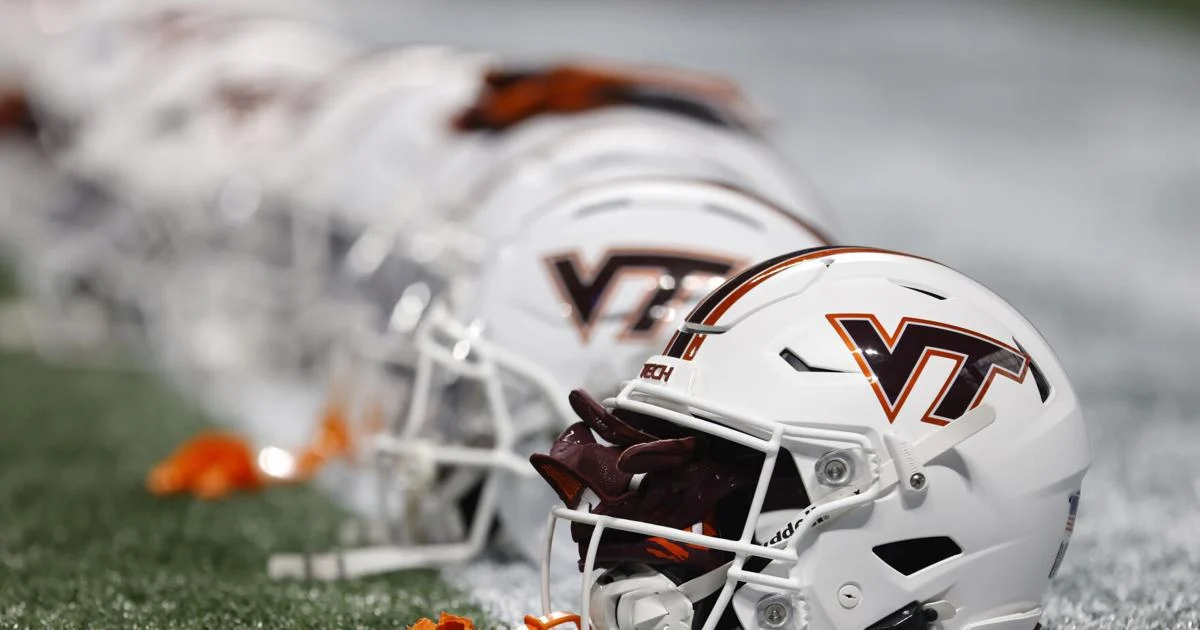
The Virginia Tech Board of Visitors is scheduled to vote next week on a proposal that could add up to $229.2 million to the university’s athletic department funding over the next four fiscal years.
The plan calls for $186.6 million to be added in incremental operating expenses over the four years and an additional $42.6 million in one-time expenses spread out over four years.
“Without investment, the university and region risk declining revenues,” the presentation said in a section titled, Why Now? “Demonstrating the university’s commitment is critical to attracting the external partnerships necessary to achieve success.”
Board of Visitors Rector John Rocovich directed board members J. Pearson and Ryan McCarthy to develop a plan in response to athletic director Whit Babcock’s Aug. 18 presentation on why the athletic department’s budget needed to be increased with changes in college athletics.
Babcock said the Hokies’ athletic budget needs to be around $200 million annually to compete with the league’s top teams.
The plan that will be voted on Sept. 30 by the Board of Visitors calls for an initial $47.1 million investment for the 2026 fiscal year budget. Most of the investment will be $33.3 million added to the operating budget, and $13.8 million allocated for one-time expenses to the athletic department.
“The time is now to make a meaningful investment to our athletic program that ensures the continued positive impact that the program has on the university, the region, and the commonwealth,” the presentation said in conclusion.
The move comes as Virginia Tech football is looking for its next football coach. Brent Pry was fired after the Hokies opened the season with an 0-3 record, and the next coach is expected to have more resources available to compete with ACC powers Florida State, Clemson and Miami.
The proposal does not include how much additional funding football will receive in the coming years. Virginia Tech’s current football budget of $41 million ranks fourth among ACC public schools behind Clemson ($67.8 million), Florida State ($61.1 million) and Georgia Tech ($41.9 million).
The presentation broke down where the $229.2 million in funding is coming from over the next four years.
The university is expected to start a targeting fundraising campaign that will raise $30 million per year, and that will account for 52.4% of the funding ($120 million of the $229.2 million).
Institutional support is expected to be at $48.3 million over the four years ($10.8 million in FY26 and $12.5 million per year over FY27-29), and the presentation said that will be “institutional subsidy within state limit.” The presentation also added the “financial plan does not directly impact current academic operations, though it will limit our flexibility for new and emerging investments in the future.”
Student fees will account for $21.3 million. That revenue is based on a $100 fee increase per year. The presentation states that “VT is expected to continue to have the lowest comprehensive fee of the Virginia public institutions.”
Bridge funding — which the university describes as “enhanced media revenues, conference allocations, and other self-generated revenues” — is projected to account for $39.6 million.
If the plan is approved, Virginia Tech’s athletic budget will increase from $156.8 million to $190.1 million in FY26, $204.3 million in FY27, $207.3 million in FY28 and $212.1 million in FY29.
Those figures would give the Hokies one of the highest athletic operating budgets in the ACC.
“University leaders believe the proposed amended budget, if approved, will position Virginia Tech to compete at the highest levels of the conference resulting in significant increase in media rights and conference revenue,” the university said in a press release. “This proposed investment would be a shared responsibility between the university and donors, involving a targeted fundraising campaign seeking to raise $120 million in new funding over four years.”
In Babcock’s presentation on Aug. 18, he included a graphic that showed ACC operating budget estimates as of July 1. Clemson was the highest public institution at $190 million, and Florida State was at $170 million.
Virginia Tech was last among the ACC’s 10 public institutions at $122 million.
Those figures didn’t factor in the $20.5 million in revenue sharing that kicked in for the 2025-26 academic year
Babcock’s presentation also included a $52 million ask in a mix of one-time expenses and yearly increases. Half of that request ($26 million) was for one-time expenses.
“I am confident you will soon see a modernized structure built for success in this rapidly changing environment of college athletics,” Babcock said.
The plan from Pearson and McCarthy calls for $42.6 million in one-time expenses ($13.8 million in FY26, $13.5 million in FY27, $10.1 million in FY28 and $5.2 million in FY29).
The one-time expenses in Babcock’s presentation included $1.5 million for recovery areas, bod pods, cryotherapy, etc.; $4 million for Wi-Fi enhancements in Lane Stadium; $5 million for premium seating upgrades and fan amenity enhancements in Lane Stadium and Cassell Coliseum; $8 million to heat the indoor practice facility for year-round use; $5.5 million to replace severely outdated Lane Stadium videoboard; and $2 million for LED lights.
Damien Sordelett (540) 981-3124
damien.sordelett@roanoke.com
Love
0
Funny
0
Wow
0
Sad
0
Angry
0
Be the first to know
Get local news delivered to your inbox!
* I understand and agree that registration on or use of this site constitutes agreement to its user agreement and privacy policy.
Damien Sordelett
Get email notifications on {{subject}} daily!
Your notification has been saved.
There was a problem saving your notification.
{{description}}
Email notifications are only sent once a day, and only if there are new matching items.
Followed notifications
Please log in to use this feature
Log In
Don’t have an account? Sign Up Today



